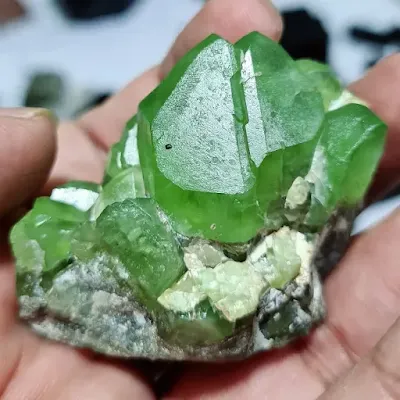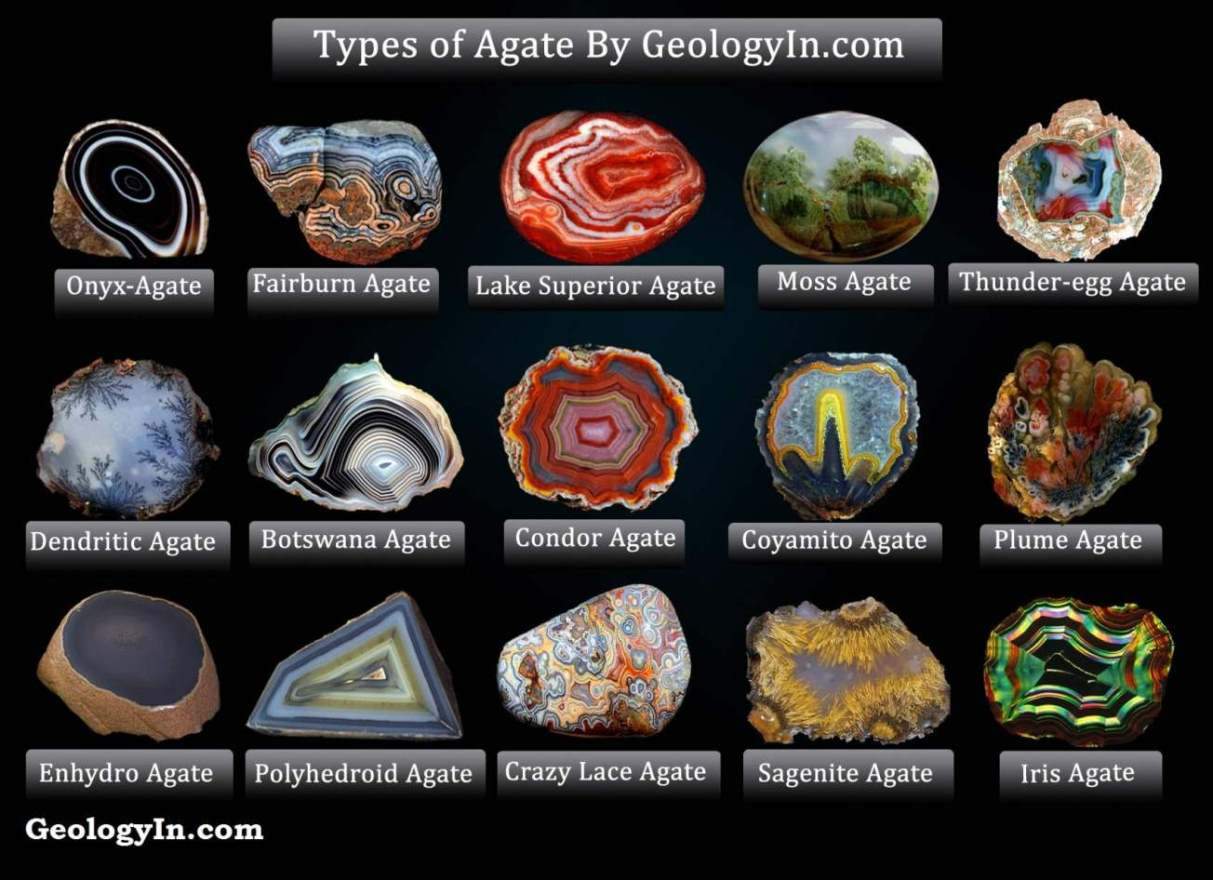Peridot: Color, Formation, Properties and Value
Peridot is a beautiful, yellowish-green gemstone variety of the mineral olivine. It's known for its vibrant color and rich history, having been prized for centuries for its beauty and believed to have magical properties.
Peridot typically ranges from a yellowish-green to a deep olive green. The most valuable stones have a pure, bright green color. Peridot's color is caused by the presence of iron in the mineral's crystal structure. The more iron, the darker the green color of the peridot.
Peridot is sometimes called "evening emerald" because its color remains vibrant even under artificial light.
Peridot has been found in meteorites, suggesting that it may exist on other planets or asteroids.
Formation of Peridot
Peridot is formed in the upper mantle of the Earth, where it is found in association with other mafic and ultramafic rocks. These rocks are rich in iron and magnesium, which are the two elements that give peridot its characteristic green color. Peridot is brought to the surface by volcanic activity, where it can be found in lava flows and other igneous rocks.
 |
| Peridot: Color, Formation, Occurrence and Value |
Properties of Peridot
Composition: Peridot is a magnesium iron silicate, specifically a variety of the mineral olivine. Its chemical formula is MgFeSiO₄, where magnesium and iron can be present in varying proportions.
Physical Properties
Color: Peridot is known for its beautiful green color, ranging from light yellowish-green to deep olive green. The color is caused by the presence of iron in the crystal structure.
Luster: Peridot has a vitreous luster, meaning it has a glassy shine.
Crystal System: Peridot belongs to the orthorhombic crystal system. Its crystals are typically prismatic or tabular.
Streak: Peridot has a white streak, meaning that when scratched on an unglazed porcelain plate, it leaves a white powder.
Hardness: Peridot has a hardness of 6.5-7 on the Mohs scale of mineral hardness. This means it can scratch glass but not steel.
Cleavage: Peridot has imperfect cleavage in two directions. This means it can break along specific planes with moderate ease.
Crystal Form: Peridot crystals can be found in various forms, including prismatic, tabular, and granular.
Density: Peridot has a density of 3.30-3.40 g/cm³, making it a relatively heavy mineral.
Transparency: Peridot can be transparent, translucent, or opaque, depending on the presence of inclusions and other factors.
Fracture: Peridot has a conchoidal fracture, meaning it breaks with smooth, curved surfaces.
Specific Gravity: The specific gravity of peridot is slightly higher than its density, ranging from 3.33 to 3.47.
Solubility: Peridot is insoluble in water and most acids but can be dissolved by strong hydrofluoric acid.
Magnetism: Peridot is weakly magnetic due to the presence of iron in its structure.
Optical Properties
Fluorescence: Peridot can exhibit weak fluorescence, appearing slightly yellowish-green under ultraviolet light.
Pleochroism: Peridot exhibits slight pleochroism, meaning its color can appear slightly different depending on the viewing direction.
Refractive Index: Peridot has a refractive index that ranges from 1.654 to 1.690. This value indicates how much light bends as it passes through the peridot, contributing to its brilliance.
Additional Properties
Inclusions: Peridot can contain various inclusions, such as chromite, spinel, and nickel-iron alloys. These inclusions can affect the color, transparency, and value of the gem.
 |
| Shield-cut peridot, From Tanzania. Photo © Joel E. Arem |
Peridot Colors
The primary cause of peridot's green color is the presence of iron within its crystal structure. Specifically, iron substitutes for magnesium in the mineral's formula (MgFeSiO₄). The amount and type of iron present significantly influence the perceived color:
Iron Content:
Higher iron content (10-20%) Leads to deeper, darker green shades of peridot, ranging from olive green to near blackish-green. This is because iron absorbs specific wavelengths of light, leaving the remaining green wavelengths to be reflected and perceived by the eye.
Lower iron content (5-10%) Results in lighter, yellowish-green to lime green shades. Minerals with very low iron content are called forsterite and are colorless.
Occurrence of Peridot
Peridot is found in igneous rocks, such as basalt and peridotite. It is also found in some meteorites. The largest peridot deposits are found in the deserts of Egypt and Pakistan. Smaller deposits are found in the United States, Brazil, China, and Australia.
The largest peridot deposits in the world are found in the following locations:
Zabargad Island, Egypt: This island in the Red Sea is known for its large peridot crystals. The peridot mines on Zabargad Island were first worked by the ancient Egyptians, and they have been producing peridot for over 3,500 years.
Pakistan: Peridot is also found in Pakistan, in the Kohistan region. The peridot crystals from Pakistan are typically smaller than those found on Zabargad Island, but they are often of higher quality.
Myanmar: Peridot is also found in Myanmar, in the Mogok region. The peridot crystals from Myanmar are typically very high quality, and they are often used in fine jewelry.
United States: Peridot is also found in the United States, in the state of Arizona. The peridot mines in Arizona are the largest in the Western Hemisphere.
 |
| Natural Peridot Crystal, with Rutile Crystal Inside. |
History and Uses of peridot
Peridot has been prized for centuries. It was one of the most popular gemstones in ancient Egypt, and it was often used in jewelry and amulets. Peridot was also known as the "gem of the sun" because it was believed to have protective powers against the sun's rays.
Island of Zabargad: Zabargad, an island in the Red Sea, was a historically significant source of peridot. The ancient Egyptians mined peridot from this island.
Hawaii: In modern times, Hawaii has become a significant source of peridot. The gemstone is found in the volcanic basalt rocks of the island of Oahu.
Jewelry:
The primary use of peridot is in jewelry, where it is often faceted and used in rings, necklaces, earrings, and bracelets.
It is appreciated for its vibrant green color, which ranges from yellowish-green to olive-green.
Historical and Cultural Significance:
Due to its historical significance, peridot is sometimes used in antique or vintage jewelry designs, reflecting the charm and allure of bygone eras.
Cleopatra's Mines Collection:
The mines on Zabargad Island are considered legendary due to their historical association with Cleopatra. The allure of peridot from these mines adds to the gemstone's mystique.
Hawaiian Jewelry:
In Hawaii, peridot is often used in traditional jewelry designs, celebrating its connection to the volcanic origins of the islands.
Anniversary Gemstone:
Peridot is the birthstone for the month of August and is associated with the 16th wedding anniversary.
Collector's Gemstone:
Exceptional and rare peridot specimens, especially those with large, vibrant colors, can be highly sought after by gemstone collectors.
 |
| Peridot Crystal Cluster From Spat Mine Manshera, Pakistan Photo: Fayyaz Ahmed |
Meaning and Symbolism of Peridot
Peridot is associated with many meanings and symbols.
Prosperity and Abundance: Its resemblance to money's color led many cultures to associate peridot with wealth, fortune, and success.
Peace and Harmony: Its calming green hue is often linked to inner peace, balance, and emotional well-being. It's believed to soothe anxieties and promote relaxation.
Renewal and Growth: Peridot's connection to nature symbolizes new beginnings, personal growth, and positive change. It's thought to inspire creativity and help overcome challenges.
Love and Compassion: The gemstone is associated with the heart chakra, representing love, empathy, and healthy relationships. It's believed to foster kindness and understanding.
August Birthstone: Peridot is the official birthstone for August, making it a meaningful gift for those born in that month.
16th Anniversary Gemstone: It's also traditionally given to celebrate the 16th year of marriage, symbolizing growth and renewal within the relationship.
 |
| Peridot in basalt from the mountains of Canary Islands in Spain. |
Care and Maintenance
Peridot is a relatively easy gemstone to care for. It should be cleaned with warm, soapy water and a soft cloth. Peridot should not be exposed to harsh chemicals or heat, as this can damage the gemstone.
Pricing and Value
The value of peridot is determined by four factors: color, clarity, size, and cut.
- Color: The most valuable peridots have a deep green color with no yellow or brown tint.
- Clarity: The fewer inclusions a peridot has, the more valuable it is. Inclusions are small, natural imperfections in the stone.
- Size: Larger peridots are more valuable than smaller ones.
- Cut: The cut of a peridot can also affect its value. A well-cut peridot will sparkle and reflect light beautifully.
Peridot is a relatively affordable gemstone, but high-quality peridots can be quite expensive.
The price of peridot can vary widely depending on the factors listed above. A small, low-quality peridot may cost only a few dollars, while a large, high-quality peridot can cost thousands of dollars.
Pallasite meteorites
 |
| Large Green Peridot Crystals in Pallasite Meteorite Photo: Steve Jurvetson |
Pallasite meteorites are a type of stony-iron meteorite that contain large crystals of olivine/Peridot, a mineral that is often green in color. The green color of the olivine in pallasite meteorites is caused by the presence of iron impurities. The largest known peridot crystal found in a pallasite meteorite is about 2.5 centimeters in diameter.
 |
| Raw peridot crystals Photos: Barlocher Federico |


%20(1).webp)





